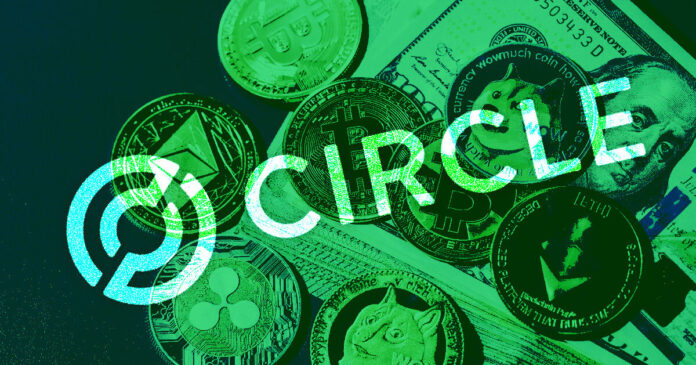Circle’s top executive spoke favorably of competition from PayPal’s stablecoin while emphasizing his own company’s strong standing on Aug. 10.
Jeremy Allaire, the CEO of Circle, said that other firms will likely begin to introduce stablecoins following PayPal’s announcement. He told Bloomberg:
“I expect you will see many many, not just internet payments firms, but also … others begin to get more involved in this. It’s great to have this new competition — I do think it’s going to drive more and more companies into the field.”
Allaire said that his firm does not plan to offer white-label solutions in the same manner as Paxos, the stablecoin firm behind PayPal’s new offering. However, he said that Circle does plan to form partnerships to promote the adoption of its USDC stablecoin.
Allaire additionally predicted that many stablecoins could cease to exist “over the next two years” as regulators introduce stricter regulation. He alluded to regulatory developments in both the U.S. and the EU that could cause this trend.
Earlier, on Aug. 8, Allaire expressed support for PayPal’s decision to introduce a stablecoin. There, he noted that favorable regulations “can open up a free and competitive market” for companies that want to issue dollar-backed cryptocurrencies.
Circle is performing well despite reduced market cap
Allaire also discussed Circle’s market standing and disclosed a cash buffer in excess of $1 billion that could help the firm withstand new competition.
The company saw $779 million in revenue and $219 million in adjusted earnings before interest, taxes, depreciation, and amortization (EBITDA) during the first half of 2023. Allaire noted that those numbers are “significantly more than [Circle] had expected” as both numbers surpass its results for the entirety of 2022.
That growth could counteract the falling market share of USDC, which has dropped from $45 billion at the beginning of 2023 to $26 billion at present.
Allaire said this decrease in market cap is partly attributable to Binance’s decision to reduce its reliance on USDC in favor of its own stablecoin, BUSD, in September 2022. That change also indirectly benefited another stablecoin, Tether’s USDT, which was not among the stablecoins affected by Binance’s policy.
Allaire acknowledged said that some events, such as failures of regional banks, have done damage to USDC adoption. Notably, the asset lost its peg around the time that Silicon Valley Bank collapsed in March. He said certain other events, such as the collapse of Terra and the collapse of FTX, benefited USDC despite their negative nature.
He also suggested that future developments, such as reduced Federal interest rates and an upcoming reporting agreement with Deloitte, could provide an advantage.
Credit: Source link






















 Swell Ethereum
Swell Ethereum  L2 Standard Bridged WETH (Blast)
L2 Standard Bridged WETH (Blast)  Reserve Rights
Reserve Rights  Hashnote USYC
Hashnote USYC  Usual USD
Usual USD  Non-Playable Coin
Non-Playable Coin  Trust Wallet
Trust Wallet  LayerZero
LayerZero  PONKE
PONKE  Stader ETHx
Stader ETHx  Zilliqa
Zilliqa  Osmosis
Osmosis  OriginTrail
OriginTrail  Zerebro
Zerebro  Amp
Amp  cWBTC
cWBTC  Celo
Celo  Livepeer
Livepeer  Holo
Holo  Jito
Jito  Binance-Peg BUSD
Binance-Peg BUSD  Gigachad
Gigachad  Baby Doge Coin
Baby Doge Coin  Degen (Base)
Degen (Base)  EthereumPoW
EthereumPoW  Golem
Golem  0x Protocol
0x Protocol  Polygon Bridged WBTC (Polygon POS)
Polygon Bridged WBTC (Polygon POS)  Siacoin
Siacoin  Dogs
Dogs  BENQI Liquid Staked AVAX
BENQI Liquid Staked AVAX  Drift Protocol
Drift Protocol  Enjin Coin
Enjin Coin  Apu Apustaja
Apu Apustaja  Liquid Staked ETH
Liquid Staked ETH  pumpBTC
pumpBTC  Dash
Dash  Dymension
Dymension  Ankr Network
Ankr Network  Polymesh
Polymesh  Simon's Cat
Simon's Cat  JUST
JUST  Kusama
Kusama  Verus
Verus  Olympus
Olympus  Ether.fi
Ether.fi 
